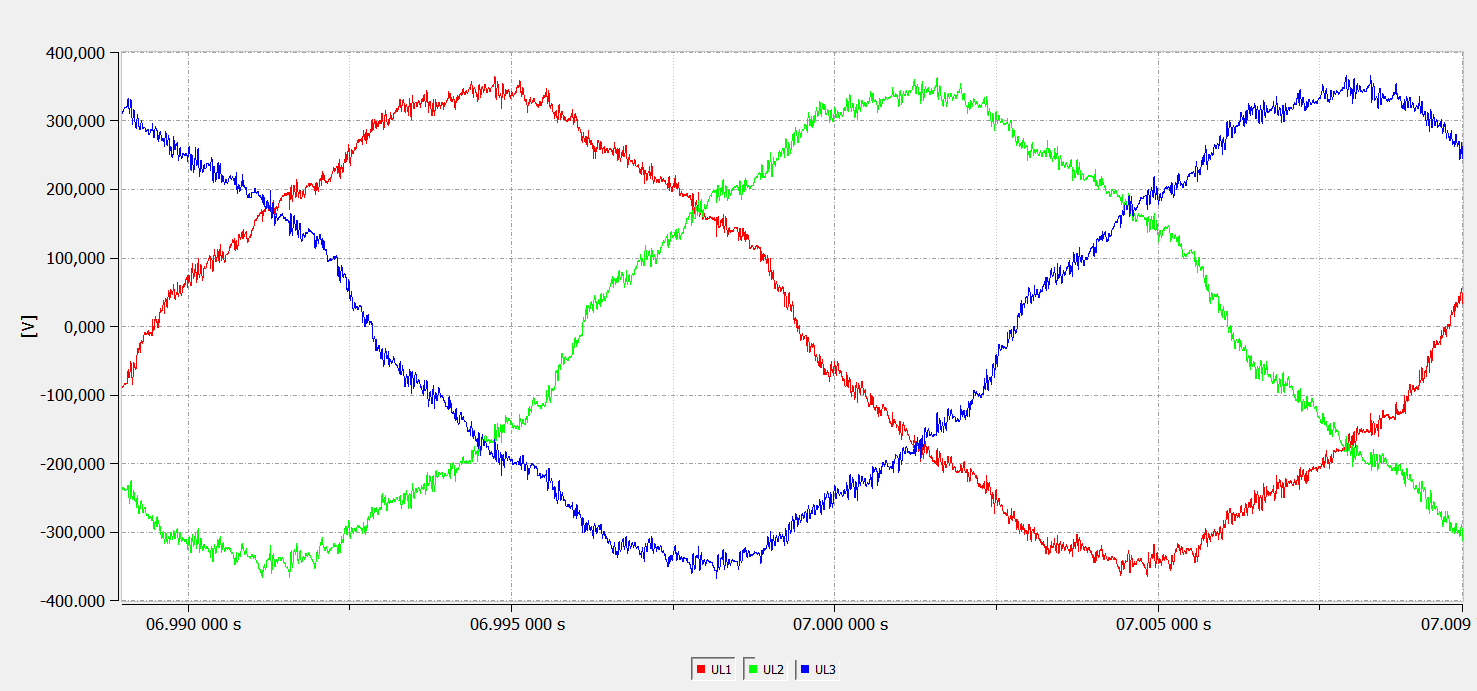
singing circuit breakers
Often, risks for electrical equipment in systems only become apparent through attentive listening.
Also in this case, which is not uncommon in the metal processing industry. The reason for the extreme voltage distortions in a wide frequency spectrum up to a little over 20 kHz are powerful converters in the presses of a large supplier. We have measured similar disturbances several times in the last 10 years. And a frequent disturbance pattern is disturbingly loud whistling noises in open circuit breakers, through which the largest part of the causing switching ripple currents must flow. The responsible electricians are then rightly concerned about the service life of the system and a negative influence on the tripping behavior of the circuit breakers. All other consumers in the network are also affected when such disturbances have been proven by a qualified network analysis. Premature aging of the systems and devices must then be expected.
Do not hesitate to have a qualified network analysis carried out by an experienced EMC specialist if you notice high-frequency noises in your system or consumers.
To prove cause and effect, especially in the case of high-frequency interference, it is not sufficient to have a network analysis carried out in accordance with EN 61000-4-30 with the limit values of EN 50160 or EN 61000-2-2 / EN 61000-2-4. In this case, measuring instruments are required whose capabilities go far beyond those required by these standards. Furthermore, a lot of experience and knowledge of the plant is required for the selection of the correct measuring locations and for the device parameterization.
And when interpreting the measurement results, for example, you can unfortunately not rely on the latest standard. For example, the effects above 10 kHz shown in the diagram would even be permissible according to the latest EN 61000-2-2 from 2019. And in EN 61000-2-4, which has been valid for industrial networks since 2003 without any changes, there are not even limit value recommendations for this.
Possible solutions for such problems are usually passive filters (LC- or broadband filters).
Ideally, the causing inverters should not even emit correspondingly high and high-frequency currents. This could also be achieved with some additional effort in the converters, but is apparently not in the interest of the manufacturers.